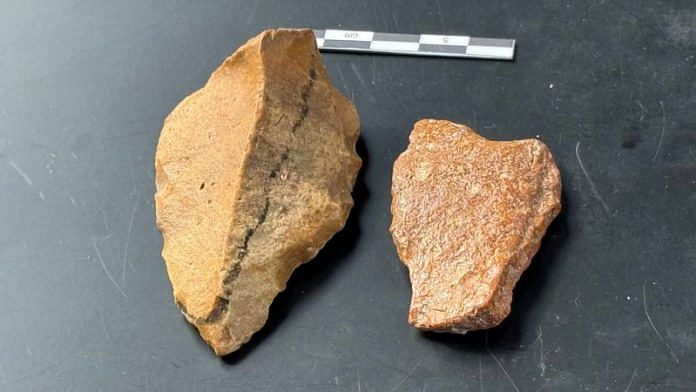SOPPENG, Indonesia (Reuters) -Scientists have found a series of stone tools on Indonesia’s Sulawesi island they say may be evidence of humans living 1.5 million years ago on islands between Asia and Australia, the earliest known humans in the Wallacea region.
Archaeologists from Australia and Indonesia found the small, chipped tools, used to cut little animals and carve rocks, under the soil in the region of Soppeng in South Sulawesi. Radioactive tracing of these tools and the teeth of animals found around the site were dated at up to 1.48 million years ago.
The findings could transform theories of early human migrations, according to an article the archaeologists published in the journal Nature in August.
The earliest Wallacean humans, pre-historic persons known as Homo Erectus, were thought to have only settled in Indonesia’s Flores island and Philippines’ Luzon island around 1.02 million years ago, as they were thought to be incapable of distant sea travel, proving the significance of the Sulawesi findings in theories of migration.
“These were artefacts made by ancient humans who lived on the earth long before the evolution of our species, Homo Sapiens,” said Adam Brumm, lead archaeologist from Griffith University in Queensland, Australia.
“We think Homo Erectus somehow got from the Asian mainland across a significant ocean gap to this island, Sulawesi, at least 1 million years ago,” Brumm said.
Wallacea is a region in Eastern Indonesia including several islands such as Sulawesi, Lombok, Flores, Timor, Sumbawa that lie between Borneo and Java and Australia and New Guinea. The region is named for the naturalist Alfred Russel Wallace who studied the fauna and flora of the area.
(Reporting by Abdul Rahman Muchtar in Soppeng; Writing by Bernadette Christina; Editing by Christian Schmollinger)
Disclaimer: This report is auto generated from the Reuters news service. ThePrint holds no responsibility for its content.





